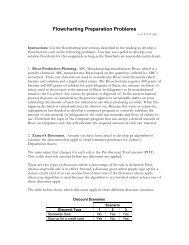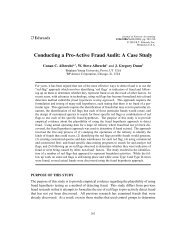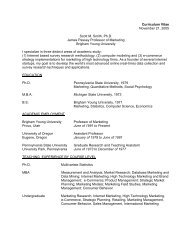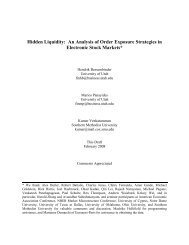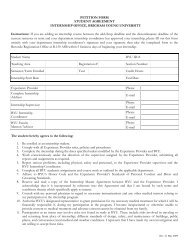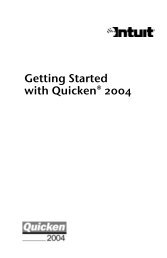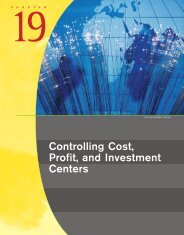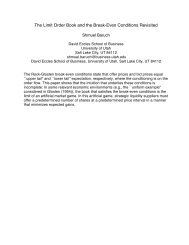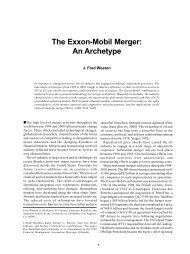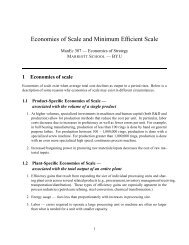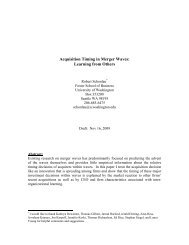why do firms go public? - Marriott School
why do firms go public? - Marriott School
why do firms go public? - Marriott School
You also want an ePaper? Increase the reach of your titles
YUMPU automatically turns print PDFs into web optimized ePapers that Google loves.
Jay Ritter became one of the pioneers in IPO research by compiling a database of 2,609<br />
IPOs from 1975-1984. He used a subset of 1,526 of these IPOs that were listed on CRSP for his<br />
seminal 1991 Journal of Finance article (Ritter (1991)). Professor Ritter now offers <strong>public</strong><br />
access to the complete database on his webpage.<br />
In the mid to late 90’s, Compact Disc Disclosure offered IPO prospectuses (SEC S-1<br />
<strong>do</strong>cuments) for researchers to scour. Around the same time, Securities Data Company (SDC)<br />
was marketing its New Issues database in DOS-style format which streamed over the internet.<br />
The advent and expansion of SDC provided a catalyst for IPO researchers. Although errors have<br />
been <strong>do</strong>cumented in SDC along the way by scholars such as Alexander Ljungqvist and Jay Ritter<br />
(corrections available on their respective webpages), the easy access to IPO data via SDC has<br />
been a boon to researchers. Since SDC, various other data providers continue to provide richer<br />
and richer data on IPOs.<br />
The existence of these computer-readable data opened up a large literature testing IPO in<br />
the three IPO phenomena of underpricing, long-run returns, and hot markets along with newer<br />
discoveries as well. As a side note, the availability of IPO data also increased competition for new<br />
anomalies. For example, at one point in time, at least five teams of researchers were all working on<br />
the lockup expiry effect simultaneously (earliest known working paper dates: Brau, Carter,<br />
Christophe, and Key (1999), Brav and Gompers (1999), Bradley, Jordan, Roten, and Yi (1999),<br />
Field and Hanka (1999), Ofek and Richardson (2000)). Field and Hanka won the lockup expiry<br />
race with their article that was published in the Journal of Finance (Field and Hanka (2001)). The<br />
Bradley team focused their paper on VC-effects in lockups and published their paper in the<br />
Journal of Financial Research (Bradley et al. (2001)). Brav and Gompers focused on the front-end<br />
of the lockup paper and published their revised paper in the Review of Financial Studies (Brav and<br />
Gompers (2003)). The Brau et al. paper on lockup expiry was published in Managerial Finance<br />
21



